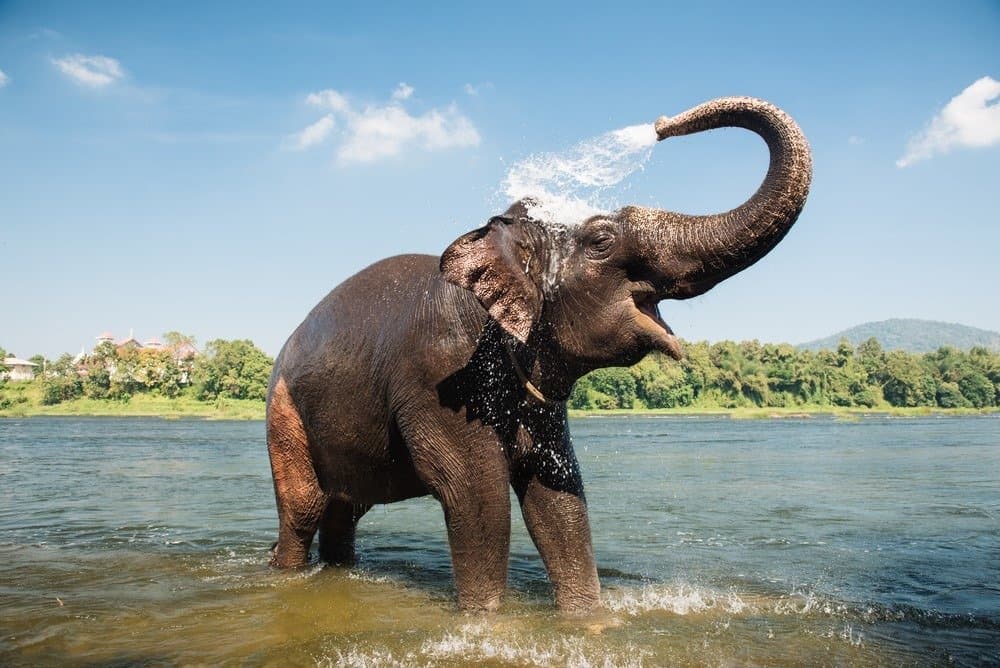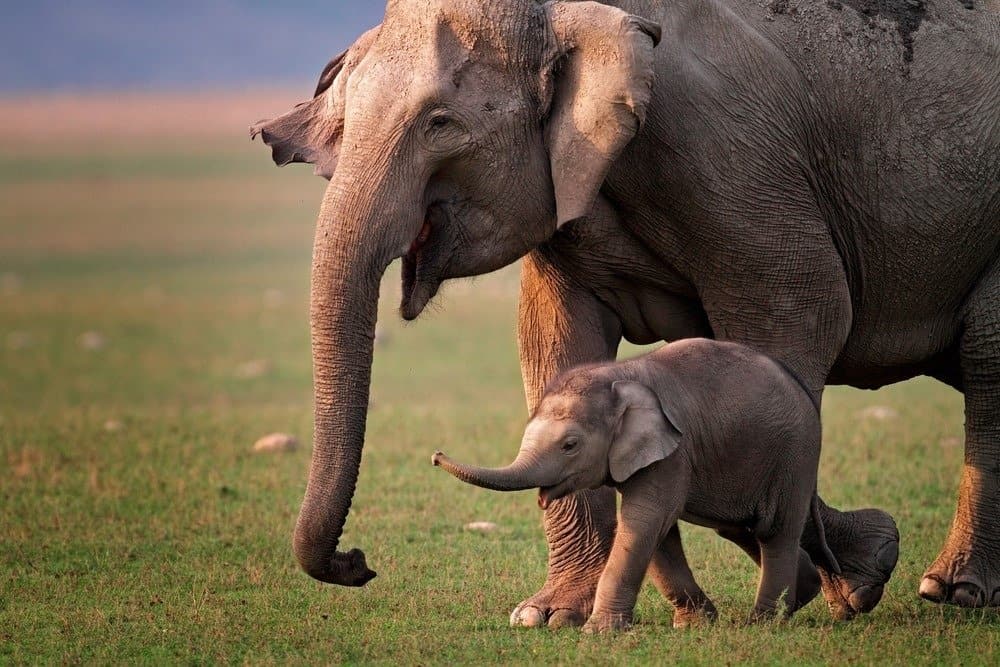The bright yellow sign warning ‘CAUTION – ELEPHANT CROSSING’ gives a clue about what is about to happen in this clip. A super confident (and very large) elephant casually strolls in front of a truck. The clever creature actually waits beside the road until this truck is in front of it and then steps out! So, what is the attraction of this particular vehicle?
Watch the Incredible Footage Below!
We learn from the video notes that it is carrying sugar cane – something that elephants in this area are very keen on. They have learned that by stepping out in front of the trucks, they can bag themselves a sweet treat. Once the elephant has dragged a bunch of sugar cane from the truck using its trunk, it allows the vehicle to continue with its journey. It’s like an unofficial elephant road tax!
How Big Are Asian Elephants?

Elephant trunks can hold over a gallon of water!
©Dmytro Gilitukha/Shutterstock.com
This Asian elephant has no problem reaching the sugar cane from the top of a truck. Males can be 10 feet high to the shoulder and weigh up to 12,000 pounds. Their trunk, which is actually called a proboscis, allows them to reach even higher. It contains over 100,000 muscle units which gives it great dexterity. It’s actually big enough to hold 1.3 gallons of water at a time! Their ears, however, are smaller than in the African elephant.
What Do Asian Elephants Normally Eat?

Elephants typically graze on shrubs, grass, and trees.
©Mogens Trolle/Shutterstock.com
Not all elephants in India rely on sugar cane trucks for their food. Elephants are able to both browse and graze but this varies with the season. During the dry season, they mainly browse on shrubs and trees. Then, when the wet season arrives, they graze grass by dislodging clumps of earth with their feet. They then hold it in their trunk and knock it against their leg to remove the soil before putting it in their mouth. Elephants have even been seen washing clumps in water. They also need salt which they excavate from salt deposits using their tusks. So, it’s clear that elephants were already creative feeders before humans and their trucks came along!
The photo featured at the top of this post is © DorSteffen/Shutterstock.com
Thank you for reading! Have some feedback for us? Contact the AZ Animals editorial team.






